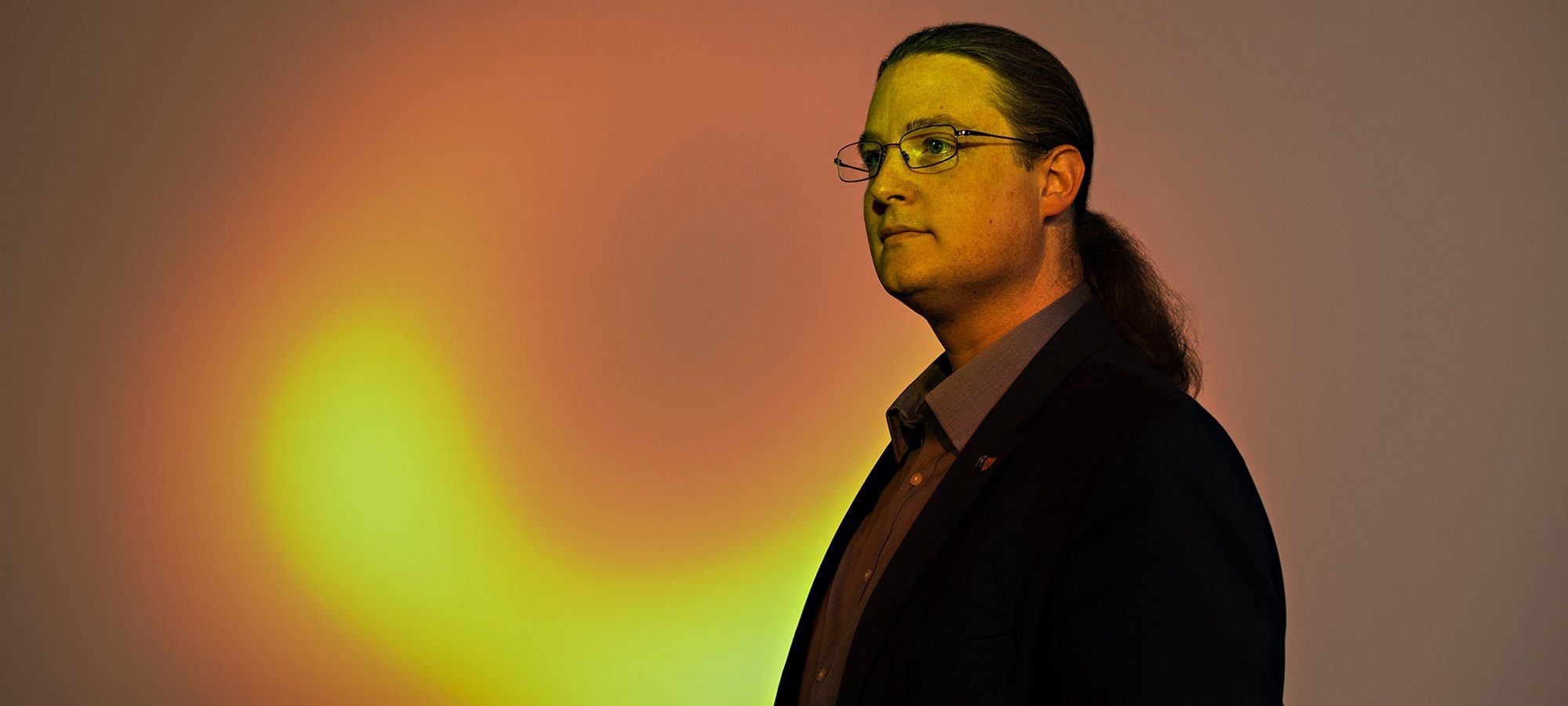EHT scientist on revealing a black hole: “We felt the weight of history”
Theoretical astrophysicist Avery Broderick reflects on the 20-year project that went from audacious idea to globe-stopping announcement.
Take a self-guided tour from quantum to cosmos!
Theoretical astrophysicist Avery Broderick reflects on the 20-year project that went from audacious idea to globe-stopping announcement.

Two decades ago, I was among a ragtag group of dreamers who yearned to do something not just scientifically interesting, but brand new. We staked our careers and reputations on an endeavour we believed would someday bear fruit.
That endeavour would become the Event Horizon Telescope (EHT), an interconnected array of telescopes around the world, linked with split-second precision, with a shared goal: to capture humanity’s first glimpse of a black hole.
In the beginning, the EHT was just a bold idea, and the risk was palpable. A newly minted PhD at the time with an enviable research job, I also had a burgeoning family to care for. I was faced with a choice: to stick with the safety of the familiar or gamble on the possibility of participating in something profound. At the same time, I was being scouted for lucrative opportunities outside of science.
It was Perimeter’s Latham Boyle, then a fellow postdoc, who reminded me that we give our children more than money. We teach them a sense of what is truly fulfilling and important. The EHT gamble stood to pay dividends beyond the monetary. For Latham’s insight, I remain forever grateful.
On April 5, 2017, after years of intense work and against steep odds, the EHT’s eight interconnected telescopes around the globe finally turned toward the supermassive black hole in M87. By then, our once-ragtag group had grown to an international collaboration of 200. Through the months of analytical work that followed – endless teleconferences, work sessions, coding, blunders and successes, conflicts and resolutions, writing papers – the result became clear: an ominous shadow encircled by a bright ring, exactly as predicted, depicting a never-before-seen monster in the night. All that remained was to share our joy with the world.
Just 12 months after that observation, on April 10 of this year, I had the great honour of joining my colleagues and friends Shep Doeleman, Dan Marrone, and Sera Markoff onstage, on behalf of the entire EHT collaboration, at Washington’s National Press Club to unveil the image of the M87 black hole.
I did not relish the thought of appearing before millions. But standing alongside my colleagues to present our results in April was, and remains, a humbling experience. We felt the weight of history on that stage. It is estimated that 4 billion people – half the Earth’s population – have now seen the M87 image. It is a rare and precious occasion when humanity turns its collective gaze toward something so positive, so emblematic of the power of human ingenuity and cooperation.
That image, a gravitational behemoth 55 million light years from home, represented a culmination, a vindication, and a new beginning. Nothing could have fully prepared us for the press conference and what followed: interviews, congressional testimony, celebrations, even moments of unexpected celebrity. The world awoke to the first image of a black hole splashed in vivid colour across the front pages of practically every newspaper around the globe.
I still find myself filled with a panoply of emotions: pride in the work, joy in the sharing, relief in seeing many early predictions come to pass. And immense gratitude. I’m grateful to the young scientists with whom I worked night and day, to all the EHT collaborators both sung and unsung, to the partner organizations.
And I am inestimably grateful to my family, and to all of the families of the EHT, who have supported us and sacrificed with us. The EHT has been omnipresent for our spouses and children. My kids’ crayon drawings of black holes are posted on my office wall and remind me every day of their support, which means more than I can express.
By April 11, the day after the announcement in Washington, I was already getting restless. The wanderlust that sparked the EHT project 20 years ago is still with us.
The EHT will continue to grow for years to come: adding data collected in 2018, then from additional telescopes to be added to the network in 2020 and 2021; expanding in bandwidth; and extending to even shorter wavelengths and hence higher resolutions. It will move to space-based observations. We will replace black hole portraiture with black hole cinema. Even the minor results will only appear so in comparison; the EHT is a transformative instrument, not an incremental advance.
M87 will always be our first direct window onto the event horizon. It is now firmly ensconced in the collective human ethos. But this is just the beginning.
We are already journeying to the next horizon, and we invite the world to join the adventure.
Avery Broderick holds the Delaney Family John Archibald Wheeler Chair at Perimeter Institute.
On July 27, Juan Maldacena, a luminary in the worlds of string theory and quantum gravity, will share his insights on black holes, wormholes, and quantum entanglement.
From the James Webb Space Telescope and the black hole at the centre of our galaxy to a Nobel Prize in quantum physics, the last 12 months have provided plenty of excitement for physics fans.
Clouds of particles surrounding some black holes could create smaller versions of cosmic strings and provide insights into dark matter, according to research by Perimeter’s William East.